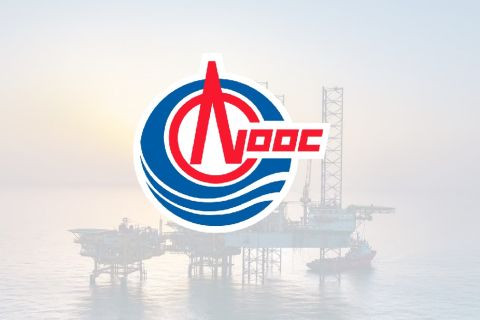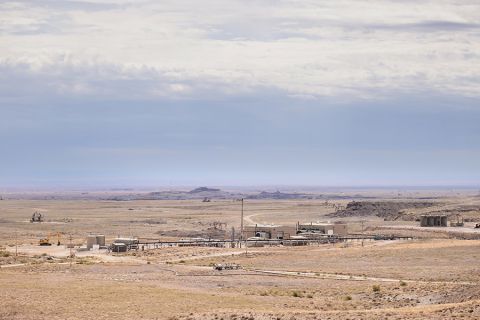The great commodity squeeze of the 2000s is on. At this writing, the prices of oil, gold and silver have reached 25-year highs based on energy-supply concerns, increased world demand for all commodities, and persistent political jitters in the countries that have the resources. At the same time, the U.S. rig count surpassed 1,600 for the first time in 20-plus years. Operators are trying to wring that last drop out of the ground. Meanwhile, an important anniversary passed quietly on March 8. On that day 50 years ago, geologist M. King Hubbert gave his bold speech predicting that U.S. oil production would peak in 1970, and that the rest of the world's production curve would someday resemble ours. You can tell the squeeze is on when several panelists at the annual convention of the American Association of Petroleum Geologists worried about the challenges of finding enough oil for the future-or finding ways to wean the U.S. economy off oil entirely. In one session, experts from IHS Energy said the world needs to find 50 million barrels per day of additional supply to 2015, if one assumes modest production declines and a 1.9% increase in world oil demand each year. IHS reports that reserves added within existing fields from 1995 to 2004 climbed by 457 billion barrels of oil equivalent-three times the rate of discoveries made during the period. In another session, Amory Lovins of the Rocky Mountain Institute said that since 1975, some 78% of the "increase" in energy supply here has come from greater fuel-use efficiency-not from an increase in actual physical supply. You can tell the squeeze is on when American companies go to extreme lengths and incur extraordinary costs to find hydrocarbons-whether because of above-ground risk or subsurface challenges. Last month, E&P legend Bill Barrett (who is retiring this month) spoke of his company's travails. During the past four years, it encountered legal, regulatory and logistical roadblocks as it sought to drill for gas reserves it knew were present in a rugged canyon area in the Uinta Basin. Barrett spent 22 months getting the seismic shoot approved by the Bureau of Land Management-then was immediately sued by an environmental group that blocked the shoot for another five months. In the end, it was all worth it-Barrett says the company found 600 billion to 1 trillion cubic feet of gas. (For more on the West Tavaputs discovery, see "Deep Utah Potential," Oil and Gas Investor, March 2006.) "The story shows how persistence pays off. Virtually all of it was difficult. This is expensive and time-consuming, and it drives you nuts. I would say this, 'Don't ever take no for an answer.'" But if operators have to go through this much trouble to replace production, the U.S. consumer is indeed faced with much higher commodity prices on a permanent basis. A new report from Ziff Energy Group in Calgary says Canadian gas supply is tilting down while local demand is going up, with the logical outcome that fewer molecules of Maple Leaf gas will be headed south. Standard & Poor's recent report card on the U.S. oil and gas industry notes the challenge too. "Although certain unconventional plays have provided growth for a handful of companies, generally the sector has had a hard time staying even without resorting to acquisitions," says credit analyst John Thieroff. S&P also views event risk to be high within the E&P sector as companies continue to build cash while facing a limited number of reinvestment opportunities. You can tell the squeeze is on when the front page of The New York Times says the U.S. is trying to warn China "against trying to lock up" world oil supplies. China has recently formed energy alliances with India and Russia. On President Hu Jintao's April visit to the U.S., he and President Bush were to discuss a joint study of traditional energy needs and new non-oil energy alternatives. China uses about 6.5 million barrels a day. Its daily oil imports rose by 750,000 barrels in January and February over 2005 levels, despite higher prices, a Goldman Sachs economist told independents at the 12th annual Executive Oil Conference in Midland in April. In Midland today, optimism reigns. "I think this is an exciting time," says Tim Culp, president and chief executive of Tandem Energy Corp., a Midland independent in the business since 1981. "Every time we fall to a low in prices, the next high is higher. I think this will be around for another 20 or 30 years. My 19-year-old son is studying to be a petroleum engineer at Texas Tech." Another Midland independent agrees. "I still think the industry will be good for the next generation. I'd encourage young guys to get some experience with a big company first, then borrow some money and get after it," says Wes Perry, president of EGL Resources. Stay alive 'til 2025.
Recommended Reading
CNOOC Makes Ultra-deepwater Discovery in the Pearl River Mouth Basin
2024-09-11 - CNOOC drilled a natural gas well in the ultra-deepwater area of the Liwan 4-1 structure in the Pearl River Mouth Basin. The well marks the first major breakthrough in China’s ultra-deepwater carbonate exploration.
EY: How AI Can Transform Subsurface Operations
2024-10-10 - The inherent complexity of subsurface data and the need to make swift decisions demands a tailored approach.
Now, the Uinta: Drillers are Taking Utah’s Oily Stacked Pay Horizontal, at Last
2024-10-04 - Recently unconstrained by new rail capacity, operators are now putting laterals into the oily, western side of this long-producing basin that comes with little associated gas and little water, making it compete with the Permian Basin.
US Drillers Add Oil, Gas Rigs for First Time in Four Weeks
2024-10-11 - The oil and gas rig count rose by one to 586 in the week to Oct. 11. Baker Hughes said the total count was still down 36 rigs or 6% from this time last year.
E&P Highlights: Oct. 28, 2024
2024-10-28 - Here’s a roundup of the latest E&P headlines, including a new field coming onstream and an oilfield service provider unveiling new technology.
Comments
Add new comment
This conversation is moderated according to Hart Energy community rules. Please read the rules before joining the discussion. If you’re experiencing any technical problems, please contact our customer care team.




